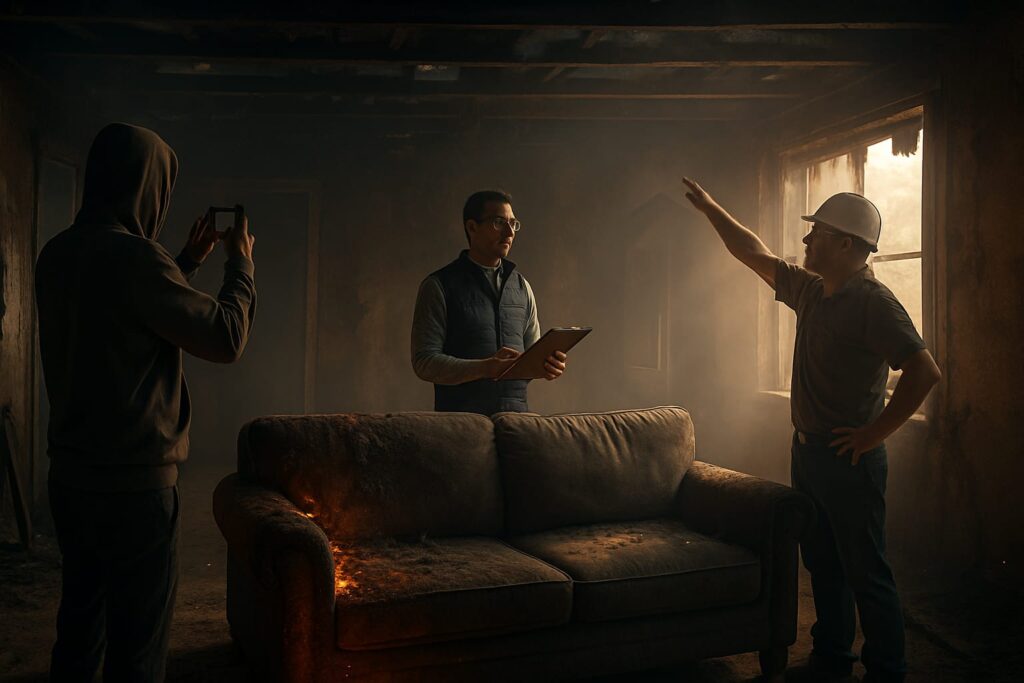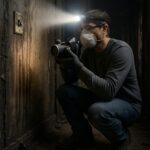Blog Details
- Home
- Blog details

Fire Damage Insurance Claims – What Homeowners Must Know
- Sep 19, 2024
- Sohel
- Comments
A fire is one of the most devastating disasters a homeowner can face. Beyond the emotional toll, the physical damage to your property can be overwhelming. While insurance is meant to provide relief, fire damage claims can quickly become complicated due to exclusions, underestimates, and disputes over what’s covered.
This guide walks you through how fire damage insurance claims work, what to expect, and how iClaimVia can help you maximize your settlem
Step 1: Ensure Safety First
Before worrying about insurance, make sure your family is safe. Call emergency services immediately and avoid reentering your home until officials declare it safe. Once the fire is out and the property is secured, you can begin preparing your claim.
Step 2: Notify Your Insurance Company Promptly
Most policies require immediate notice after a fire. Provide your insurer with:
- The date, time, and cause of the fire (if known).
- A list of affected rooms and visible damage.
- Any urgent needs, such as temporary housing.
Step 3: Document Everything Thoroughly
Insurance companies rely on evidence, and fire damage often involves both visible and hidden destruction. Document:
- Photos and videos of burned walls, ceilings, and belongings.
- Damage from smoke, soot, and water used by firefighters.
- A detailed inventory of lost or damaged items, including receipts if available.
Step 4: Understand What’s Covered
Fire insurance typically covers:
- Structural damage to your home.
- Personal property losses (furniture, electronics, clothing).
- Additional living expenses if you need temporary housing.
However, insurers may dispute coverage for:
- Items without receipts or documentation.
- Pre-existing structural issues.
- Smoke damage if deemed cosmetic rather than structural.
Step 5: Prepare for the Adjuster’s Visit
The insurance adjuster will assess the fire damage. Be prepared by:
- Having an independent contractor’s estimate for repairs.
- Presenting a detailed loss inventory.
- Asking questions about coverage limits.
Remember, the adjuster works for the insurance company, not for you.
Common Challenges in Fire Claims
- Lowball settlements that don’t reflect full repair costs.
- Disputes over smoke and soot damage.
- Delays in processing, leaving families without housing support.
Recent posts
Roof Damage Insurance Claims – Storms, Hail, and…
Insurance Claim Denials – How to Fight Back…
FAQs
Yes, most policies cover sudden electrical fires unless caused by negligence or unpermitted wiring.
Smoke and soot cleanup is usually covered, but insurers may argue over the extent.
Yes, but coverage typically pays for restoration to pre-loss condition, not upgrades.
Yes, if a storm causes a tree to fall on your home, most policies cover roof repairs and debris removal.
Usually yes—your insurer subtracts the deductible amount from your payout, so you’ll cover that portion of the repair cost.
You don’t have to accept it. iClaimVia can negotiate with your insurer and provide contractor estimates to fight for a fair settlement.
Share on
Related Posts
Hailstorm Insurance Claims – Step-by-Step Guide
Blog Details Home Blog details Hailstorm Insurance Claims – Step-by-Step Guide Sep 19, 2024 Sohel…
Roof Damage Insurance Claims – Storms, Hail, and Wind…
Blog Details Home Blog details Roof Damage Insurance Claims – Storms, Hail, and Wind Sep…
Insurance Claim Denials – How to Fight Back and…
Blog Details Home Blog details Insurance Claim Denials – How to Fight Back and Win…
- CALL NOW
Need Immediate Help?
A fire can take away your sense of security, but it doesn’t have to take away your financial stability. iClaimVia helps homeowners navigate complex fire insurance claims to ensure they get the settlement needed to rebuild and recover. Contact us today for expert claim support.
Satisfied customers





